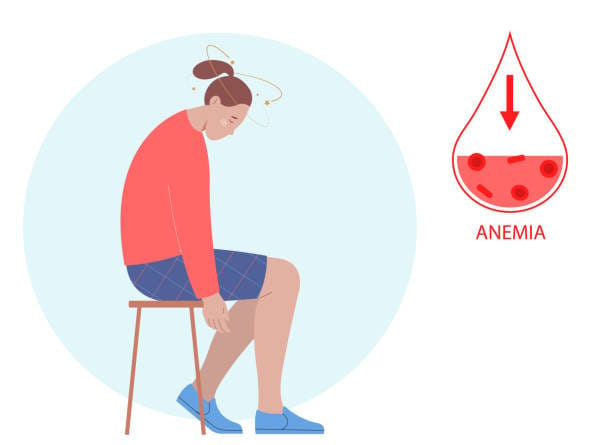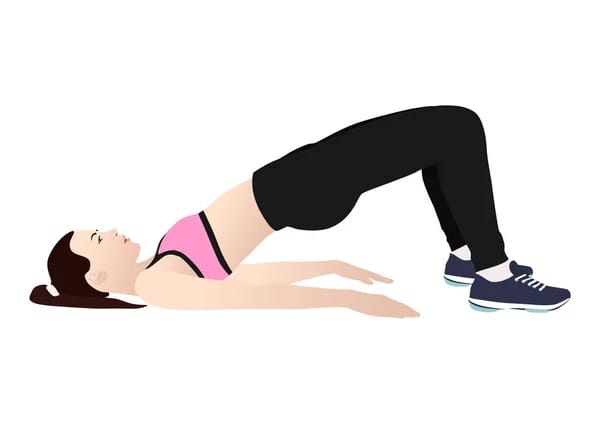- Dr Karan's Weekly Dose
- Posts
- 🍑 Low Iron Hacks, Leaky Bums & Discomfort
🍑 Low Iron Hacks, Leaky Bums & Discomfort
The Weekly Dose - Episode 150
Hacking Low Iron Levels…

If you feel constantly exhausted, out of breath climbing one flight of stairs, and have a deep suspicion that your personality has been replaced by a beige fog… there is a high probability you might just be low on iron.
According to The Lancet Haematology, iron deficiency is the world’s most common nutrient shortfall, affecting up to one in three women; iron deficiency has somehow become a global involuntary hobby.
Why the hell is it even important?
Iron is the backstage pass for your red blood cells because without it, your haemoglobin (the protein that gives blood its red color and ferries oxygen around) can’t do its job.
Common symptoms of low iron include: Pale skin or gums, fatigue that feels biblical, shortness of breath, heart palpitations and sometimes even weird cravings like chewing ice (yes, it’s a thing).
Iron deficiency is more than just feeling a bit tired. Chronic iron deficiency; especially when it progresses to anemia… can weaken your immune system, cause complications in pregnancy, and stunt children’s brain development.
Most at risk?
Women who menstruate: monthly blood loss = iron drain.
Pregnant women: building a baby + placenta = iron-intensive project.
Kids and teens: rapid growth and brain development guzzle iron like I stock up on fiber
People with chronic inflammation or gut issues: these can block iron absorption.
How to know if you’re low…?
A simple blood test will tell you. Ask for ferritin, a measure of your iron stores, not just haemoglobin (which can look “fine” while you’re running on fumes).
Sometimes you may need medical treatment but there are also some lifestyle manipulations to be implemented…
1. Eat iron like you really mean it:
Animal sources (heme iron, best absorbed); lean red meat, liver (if you dare), chicken thighs, oily fish.
Plant sources (non-heme iron, still good): beans, lentils, tofu, chickpeas, spinach, fortified cereals, nuts, seeds.
2. Pair with vitamin C:
Vitamin C boosts iron absorption dramatically. Add lemon juice to spinach, berries to oats, or a glass of orange juice with your iron-rich meal.
3. Avoid the iron thieves
Tea, coffee, and red wine contain polyphenols that can block iron in very high quantities. Calcium-rich foods and supplements also compete with iron.
4. If you supplement, do it smart
Take iron with vitamin C, not with dairy or coffee. If you take iron supplements; research suggests every-other-day dosing works even better and is easier on your gut.
5. Pay attention during high-demand phases
Pregnancy, growth spurts, heavy training, or recovery from illness = higher iron needs.
Iron deficiency is common, sneaky, and very fixable and certainly doesn’t require a trendy cleanse or a monk-like existence… just implement a few of the lifestyle factors as above and test to ensure you’re on track/don’t require medical intervention to help treat low iron!
Exercises You Must Do Daily!

You are neglecting some forgotten muscles that (literally) hold you together… your pelvic floor.
This hidden superhero in your body works silently and never asks you for thanks and most of us ignore it until disaster strikes (and trust me I’ve seen hundreds of disaster cases in pelvic floor clinics over the years).
Your pelvic floor is the hammock of muscles stretching from your pubic bone at the front to your tailbone at the back, and side-to-side across your hips.
If you could peel away the skin and peek underneath, you’d see a muscular trampoline that holds up your bladder, bowel, and for women… your uterus. Without it, basic life functions would be very messy.
When it’s weak, you get problems like leaking when you sneeze or laugh, feeling “heavy” down there, reduced sexual function, increased risk of prolapse (organs shifting where they shouldn’t) and more. And it affects men too… you guys are not immune to messed up pelvic floors!
How do you strengthen something you can’t see?
You can work it discreetly while standing in a queue or scrolling Instagram. You have no excuse after what I’m about to teach you.
The pelvic floor isn’t one muscle but a team, including:
Levator ani group (pubococcygeus, iliococcygeus, puborectalis): The main “lift and squeeze” players.
External sphincters: Control your bladder and bowel exits.
The classic kegel (squeeze & lift)
Imagine trying to stop yourself mid-pee or hold in a noxious fart; that’s your pelvic floor contracting.
How: sit or lie down. Exhale gently and draw your muscles up and in, like closing a zipper from back to front.
Hold for 5 seconds, then relax for 5. Repeat 10 times.
Caveat: Don’t clench your abs, butt, or thighs as this is an internal lift, not a glute workout.
The quick flicks (for speed & control)
These are rapid-fire squeezes to train your pelvic floor’s reflexes; vital for preventing leaks when you sneeze.
How: from a relaxed state, do 10 fast squeezes, one second on, one second off.
Do 3 sets a day, whenever you remember (waiting for your coffee and they butcher your first name).
The elevator exercise (layered engagement)
Think of your pelvic floor like an elevator with 3 floors.
How: start with a gentle squeeze (floor 1), then increase the lift (floor 2), then the strongest lift you can manage (floor 3).
Hold for 3 seconds at each level, then slowly “descend” back down.
Repeat 5 times. This builds control and endurance.
Your daily goal
3–5 minutes.. barely anything! Combine these exercises, and you’ve hit all the major muscles without anyone knowing you’re training like a stealth superhero.
Btw… if you are unlucky enough to have an overactive pelvic floor.. you may benefit from co-ordination or relaxation exercises… so always check in with a pelvic floor physiotherapist if this is you!
P.S If you want to learn more about the gut, microbiome science sign up to my newsletter dedicated to bring you short, snappy actionable tips on this:
P.P.S Only sign up if you’re really interested!
Things I Wish I Knew Before My 30s

I recently stumbled on this concept of Misogi.
Before I explain what it is; here’s a potentially disturbing question: when was the last time you did something you weren’t sure you could handle? Or that you knew would bring you serious discomfort?
If your answer is “finding parking at Black Friday sale,”...it’s the wrong answer!
Misogi is an ancient Japanese ritual designed to purify the spirit through hardship.
Traditionally, it involved standing under an icy waterfall until you questioned every life choice. You’d be hard pressed to find one of these open 9-5 on weekdays but what is another way you could find a remedy for the modern disease of comfort addiction.
Start here:
Pick something hard enough there’s a 50% chance you’ll fail.
It should feel slightly insane.
No need to document it or tell anyone about it.
Sounds stupid right? Life’s hard enough already.
Think about it this way; we’ve engineered pain out of existence.
We order groceries so we don’t have to look at other humans (guilty).
We complain about the hot weather, we complain about the cold weather.
We fight… bad wi-fi connections.
Overall, we are somewhat comfortable which is great but it’s also occasionally numbing.
It flattens the edges of life until everything feels beige. Maybe misogi slices through that beige and shocks your system into remembering life is more than routine and zoom meetings.
Now, before you sign up for a 100-mile ultra-marathon (please don’t), understand that misogi isn’t about masochism but reclaiming perspective.
When you force yourself into hardship you unlock new perspectives. A side of you that emerges when nothing is easy. That matters because every convenience we embrace trades a little resilience for a little ease.
Do that enough times, and one day life hits you with something real; a job loss, a diagnosis… and you realize your inner scaffolding has turned to paper.
Your misogi doesn’t have to be a glacier bath or dragging a tire across shards of glass. It could be:
Walking 10 miles without headphones.
Taking a silent day (yes, that means no yelling at your kids).
Lifting something heavy enough to make you swear in tongues.
Pick something so alien to your routine it feels uncomfortable because that discomfort is a data point and proof you’ve stepped outside the padded cell of convenience into a space where growth happens.
And if you don’t have an answer to what your misogi is… then you’ve just found your first challenge.
P.S On your next misogi adventure, why don’t you pop on an episode of my podcast where I explore medical and health topics in more detail…
If you found anything in this newsletter useful or indeed this guide was beneficial… share it with one person and send them this newsletter and this subscribe link:

